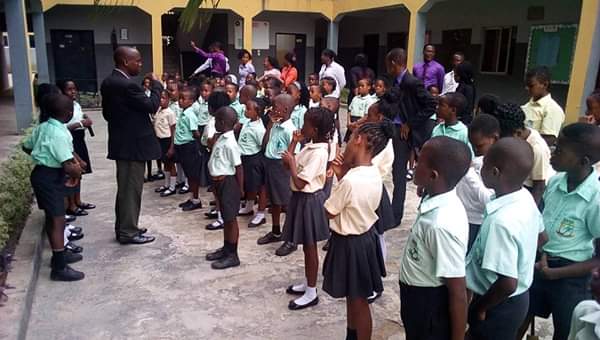By Segun Olukoye
Differentiation learning or instruction is the process of identifying students’ or pupils’ individual learning strengths, needs and interests and adapting lessons to match them.
Differentiated learning honours students’ or pupils’ diverse backgrounds and learning styles. With differentiation, teachers recognize their students or pupils as individuals with varying needs and provide them with more options for learning. In other words, teachers use multiple strategies to make sure that all students or pupils can absorb the information being taught, share what they have learned and meet long-and short-term goals.
TEN DIFFERENTIATED LEARNING STRATEGIES & EXAMPLES THAT CAN HELP BRIDGE THE GAP BETWEEN HIGH AND LOW FLIERS AMONG PUPILS
Try the ones that best apply to you, depending on factors such as student age.
1. Create Learning Stations
Provide different types of content by setting up learning stations — divided sections of your classroom through which groups of pupils or students rotate. You can facilitate this with a flexible seating plan.
Each station should use a unique method of teaching a skill or concept related to your lesson.
For example, pupils or students can rotate between stations that involve:
Watching a video
Creating artwork
Reading an article
Completing puzzles
Listening to you teach
To help pupils or students process the content after they’ve been through the stations, you can hold a class discussion or assign questions to answer.
2. Target Different Senses Within Lessons
A lesson should resonate with more pupils or students if it targets visual, tactile, auditory and kinesthetic senses, instead of only one. When applicable, appeal to a range of learning styles by:
Playing videos
Using infographics
Providing audiobooks
Getting students to act out a scene
Incorporating charts and illustrations within texts
Giving both spoken and written directions to tasks
Using relevant physical objects, such as money when teaching math skills
Allotting time for students to create artistic reflections and interpretations of lessons
Not only will these tactics help more students grasp the core concepts of lessons, but make class more engaging.
3. Share Your Own Strengths and Weaknesses
To familiarize pupils or students with the idea of differentiated learning, you may find it beneficial to explain that not everyone builds skills and processes information the same way.
Talking about your own strengths and weaknesses is one way of doing this.
Explain — on a personal level — how you study and review lessons. Share tactics that do and don’t work for you, encouraging pupils or students to try them.
Not only should this help them understand that people naturally learn differently, but give them insight into improving how they process information.
4. Use the Think-Pair-Share Strategy
The think-pair-share strategy exposes pupils or students to three lesson-processing experiences within one activity. It’s also easy to monitor and support students as they complete each step.
As the strategy’s name implies, start by asking pupils or students to individually think about a given topic or answer a specific question.
Next, pair pupils or students together to discuss their results and findings.
Finally, have each pair share their ideas with the rest of the class, and open the floor for further discussion.
Because the differentiated instruction strategy allows pupils or students to process your lesson content individually, in a small group and in a large group, it caters to your classroom’s range of learning and personality types.
5. Assign Open-Ended Projects
Similar to evaluating reading comprehension, give pupils or students a list of projects to find one that lets them effectively demonstrate their knowledge.
Include a clear rubric for each type of project, which clearly defines expectations. Doing so will keep it challenging and help pupils or students meet specific criteria.
By both enticing and challenging pupils or students, this approach encourages them to:
Work and learn at their own paces.
Engage actively with content they must understand
Demonstrate their knowledge as effectively as possible
As well as benefiting pupils or students, this differentiated instruction strategy will clearly showcase distinct work and learning styles.
6. Encourage Students to Propose Ideas for Their Projects
As well as offering set options, encourage pupils or students to take their projects from concept to completion by pitching your ideas.
A pupil or student must show how the product will meet academic standards, and be open to your revisions. If the pitch doesn’t meet your standards, tell the pupil or student to refine the idea until it does. If it doesn’t by a predetermined date, assign one of your set options.
You may be pleasantly surprised by some pitches.
After all, pupils or students themselves are the focus of differentiated instruction — they likely have somewhat of a grasp on their learning styles and abilities.
7. Run Literature Circles
Organizing students into literature circles not only encourages students to shape and inform each other’s understanding of readings, but helps auditory and participatory learners retain more information.
This also gives you an opportunity to listen to each circle’s discussion, asking questions and filling in gaps in understanding.
As a bonus, some pupils or students may develop leadership skills by running the discussion.
This activity makes written content — which, at times, may only be accessible to individual learners with strong reading retention — easier to process for more students.
8. Offer Different Types of Free Study Time
Free study time will generally benefit pupils or students who prefer to learn individually, but can be slightly altered to also help their classmates process your lessons.
This can be done by dividing your class into clearly-sectioned solo and team activities.
Consider the following free study exercises to also meet the preferences of visual, auditory and kinesthetic learners:
Provide audiobooks, which play material relevant to your lessons
Create a station for challenging group games that teach skills involved in the curriculum
Maintain a designated quiet space for students to take notes and complete work
Allow students to work in groups while taking notes and completing work, away from the quiet space
By running these sorts of activities, free study time will begin to benefit diverse learners — not just pupils or students who easily process information through quiet, individual work.
9. Group Students with Similar Learning Styles
Heterogenous grouping is a common practice, but grouping pupils or students based on similar learning style can encourage collaboration through common work and thinking practices.
This is not to be confused with grouping pupils or students based on similar level of ability or understanding.
In some cases, doing so conflicts with the “Teach Up” principle, which is discussed below.
Rather, this tactic allows like-minded pupils or students to support each other’s learning while giving you to time to spend with each group. You can then offer the optimal kind of instruction to suit each group’s common needs and preferences.
10. Give Different Sets of Reading Comprehension Activities
Instead of focusing on written products, consider evaluating reading comprehension through questions and activities that test different aptitudes.
Although written answers may still appeal to many pupils or students, others may thrive and best challenge themselves during artistic or kinesthetic tasks.
For example, allow pupils or students to choose between some of the following activities before, during and after an important reading:
Participating in more literature circles
Delivering a presentation
Writing a traditional report
Creating visual art to illustrate key events
Creating and performing a monologue as a main character or figure
Offering structured options can help pupils or students demonstrate their understanding of content as effectively as possible, giving you more insight into their abilities.
Source: https://www.prodigygame.com/blog/differentiated-instruction-strategies-examples-download/








